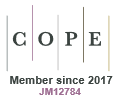Just Accepted
This article has been peer reviewed and accepted for publication. It is in production and has not been edited, so may differ from the final published form.
Welfare Challenges in Transhumant Goat Pastoralism: Insights from an Expert Survey in the Himalayan Region
Abstract
Context Transhumant goat pastoralism supports livelihoods and ecosystems across the Himalayan region, but its unique welfare risks remain under-characterised. Aims To identify and prioritise key welfare challenges in migratory goat systems through expert surveys, thematic analysis, and multivariate clustering. Methods A panel of 46 experts (16 animal scientists, 10 veterinary officers, and 20 academic researchers) rated 24 welfare issues using a 5-point Likert scale of perceived importance (1 = Not important, 5 = Extremely important). Thematic analysis was applied to open-ended responses. Principal component analysis (PCA) with Direct Oblimin rotation (eigenvalues >1; scree-plot) grouped co-occurring risks, using loadings ≥0.40. Composite importance scores per component were calculated. Key results Top-ranked issues included poor pasture quality (mean =4.18), limited feed access (3.98), and endoparasitism (3.89). Rotated PCA identified four distinct domains accounting for 58.7% of total variance: (1) Health–Nutritional Stressors, (2) Handling stress & Painful procedures (3) Security & Stockmanship Deficits, and (4) Resource & Healthcare Constraints. Qualitative responses highlighted structural barriers—such as inadequate shelter, shrinking grazing access, and gaps in veterinary infrastructure—that compound welfare risks. Conclusions Welfare risks in transhumant goats arise from interlinked environmental, healthcare, handling, and security challenges, underscoring the need for integrated interventions. Field-based validation is essential to tailor solutions across migratory contexts. Implications Targeted interventions—such as pasture rehabilitation, mobile veterinary services, humane handling and livestock management training, and predator deterrence—could significantly improve goat welfare, boost productivity, and strengthen the resilience of transhumant pastoral systems.
AN25073 Accepted 16 October 2025
© CSIRO 2025



